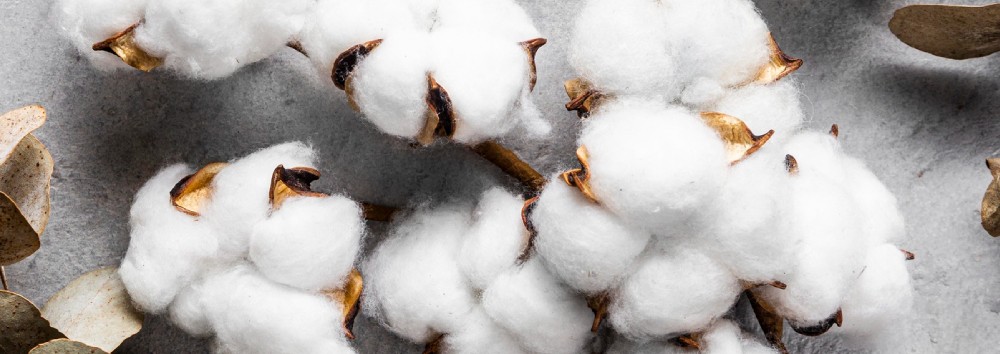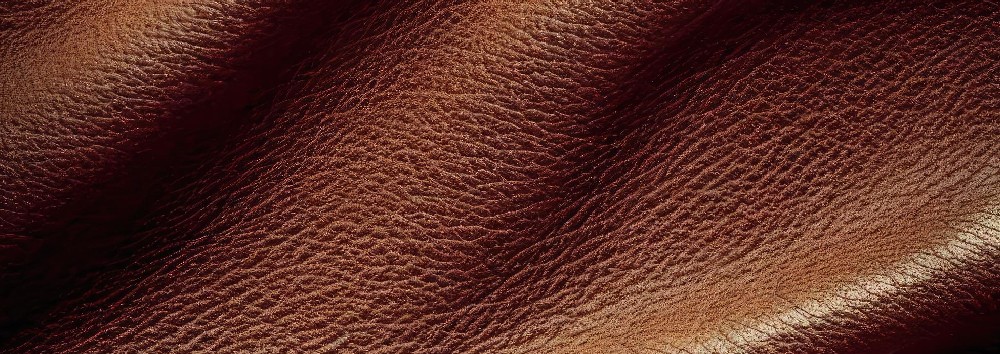Gardening aprons are more than just a means to keep your clothes clean; they are a crucial accessory for any gardening enthusiast, blending practicality with style. These aprons protect your attire from the inevitable soil and stains encountered while tending to plants. They also offer the convenience of having your gardening tools and accessories within easy reach, thanks to their multiple pockets and compartments. Beyond functionality, gardening aprons provide an extra defence against thorns and sharp objects. With a variety of designs and colours available, they allow you to express your style in the garden. This makes the gardening apron a versatile, essential tool that enhances efficiency, safety, and enjoyment in your gardening pursuits, representing a small investment for significant returns in your gardening experience.
Types of Gardening Aprons
Full-Body Aprons (Bib Aprons)

Full-body aprons, also known as bib aprons, provide comprehensive coverage from the chest to the knees or lower, safeguarding the wearer against dirt, water, and stains. Ideal for those who engage in messy gardening tasks, these aprons ensure that both your front and legs are protected, keeping your clothes clean underneath.
Materials
They are typically made from durable materials such as canvas, denim, or polyester blends, designed to withstand rough use and frequent washing.
Features
Full-body aprons often feature adjustable neck straps and waist ties for a secure, customizable fit. They have multiple pockets and loops to hold gardening tools, seeds, and personal items. Some may also have reinforced areas for added durability where wear and tear are most likely.
Ideal Tasks
Planting, potting, and general garden maintenance where total coverage is desired to protect against soil, water, and stains. They are also great for tasks that involve a lot of movement around the garden, as they provide comprehensive protection.
Benefits of Using Full-Body Aprons (Bib Aprons)
- Comprehensive Coverage: Offers extensive protection from the chest down to the knees, safeguarding against soil, water, and stains.
- Versatility: Suitable for various gardening tasks, from light planting to messy soil mixing.
- Storage Solutions: Typically features multiple pockets and loops for convenient storage of tools, seeds, and personal items.
- Adjustability: Adjustable neck straps and waist ties ensure a secure and comfortable fit for various body sizes.
Half Aprons (Waist Aprons)

Half aprons wrap around the waist and typically cover from the waist down to the mid-thigh or knee. They are perfect for gardeners who need added flexibility or prefer not to have coverage on the upper body.
Materials
These aprons are made from lightweight fabrics like cotton, linen, or a polyester blend, offering ease of movement and comfort.
Features
They usually feature several pockets of various sizes for holding tools and gardening accessories. The waist tie ensures they can fit a wide range of body sizes and can be easily adjusted.
Ideal Tasks
Light gardening tasks such as pruning, weeding, or harvesting. These aprons are perfect when you need easy access to tools but don’t require upper body protection. They’re also great for gardeners working in warm conditions who want minimal coverage.
Benefits of Using Half Aprons (Waist Aprons)
- Ease of Movement: Protects without covering the upper body, allowing greater flexibility and airflow.
- Convenience: Offers quick and easy access to tools and accessories stored in its pockets, ideal for tasks that require frequent tool changes.
- Lightweight: Tends to be lighter than full-body aprons, reducing fatigue during long gardening sessions.
- Simplicity: Easy to put on and take off, perfect for gardeners who prefer a no-fuss solution.
Cross-Back Aprons

Cross-back aprons, designed for comfort during extended use, are characterized by straps that cross over the back and eliminate neck strain. These aprons distribute weight evenly across the shoulders, which is ideal for long gardening sessions.
Materials
Often crafted from soft yet durable materials like cotton canvas or a cotton-poly blend, they provide both durability and comfort.
Features
Besides the ergonomic strap design, these aprons usually come with deep pockets and sometimes a loop for a towel or gardening gloves. Their design ensures a snug fit without the need for constant readjustment.
Ideal Tasks
Watering plants, working with wet soil, or gardening in damp environments. The water-resistant nature of waxed cotton makes these aprons perfect for protecting against moisture while doing tasks like planting in wet conditions or cleaning garden equipment.
Benefits of Using Cross-Back Aprons
- Ergonomic Design: The cross-back strap design distributes weight evenly across the shoulders, reducing neck strain and enhancing comfort during extended wear.
- Stylish and Modern: Often designed with a contemporary look, appealing to gardeners who value both form and function.
- Secure Fit: The design minimizes the need for constant readjustment, staying securely in place as you move.
- Versatility: Suitable for various gardening activities, offering a comfortable fit and ample storage.
Waxed Cotton Aprons

Waxed cotton aprons offer a waterproof solution for gardening, protecting against water and damp soil. Their waxed surface repels water, making them perfect for working in wet conditions or with water-intensive plants.
Materials
Made from cotton coated with a wax layer, these aprons are water-resistant, extremely durable, and resistant to tearing.
Features
They typically feature large pockets that are also water-resistant, ensuring that your tools and seeds stay dry. The waxed surface is easy to clean, usually requiring a wipe-down.
Ideal Tasks
Watering plants, working with wet soil, or gardening in damp environments. The water-resistant nature of waxed cotton makes these aprons perfect for protecting against moisture while doing tasks like planting in wet conditions or cleaning garden equipment.
Benefits of Using Waxed Cotton Aprons
- Water Resistance: Ideal for working in damp environments or with water-intensive plants, keeping the wearer dry.
- Durability: The waxed coating adds strength and resistance to wear and tear, extending the apron’s lifespan.
- Easy Maintenance: Dirt and water can be easily wiped off, making cleanup a breeze.
- Stylish Patina: Develops a unique patina over time, adding character to the apron that many gardeners appreciate.
Heavy-Duty Aprons

General Description: Designed for the most demanding gardening tasks, heavy-duty aprons are made to provide maximum protection against thorns, sharp tools, and rough vegetation. These aprons are the armour of the gardening world, suitable for heavy work.
Materials
Constructed from thick, durable materials such as heavy canvas, leather, or denim, these aprons are built to last and resist punctures and abrasions.
Features
They often come with reinforced stitching, padded straps for comfort, and multiple pockets and loops strategically placed for easy access to tools. Some heavy-duty aprons also feature adjustable straps for a better fit and comfort during extended periods of wear.
Ideal Tasks
Working with thorny plants, handling heavy or sharp tools, and engaging in rugged outdoor projects. These aprons offer the highest level of protection against punctures, abrasions, and stains, making them suitable for tasks like clearing brush, working with wood, or any activity that requires extra durability.
Benefits of Using Heavy-Duty Aprons
- Maximum Protection: Offers the highest level of protection against thorns, sharp tools, and rough vegetation, making it ideal for heavy-duty gardening tasks.
- Longevity: Made from materials that withstand rigorous use, ensuring the apron lasts for years.
- Functional Design: Features reinforced pockets and loops for securely holding heavy tools and accessories.
- Comfort Features: Despite their rugged construction, many heavy-duty aprons include padded straps or adjustable features for improved comfort.
Materials and Durability

The fabric selection for gardening aprons is pivotal, influencing their longevity and effectiveness. Various materials present different attributes regarding durability, adaptability, and resilience against damage. Here’s a closer look at standard fabrics utilized in the construction of gardening aprons:
| Material | Durability | Flexibility | Resistance to Stains |
|---|---|---|---|
| Cotton | Medium | High | Fair |
| Polyester | High | High | Good |
| Canvas | High | Medium | Good |
| Denim | Medium | High | Excellent |
| Leather | Very High | Low | Very Good |
| Waxed Cotton | High | Medium | Excellent |
Cotton

Cotton is a natural fibre known for its breathability and softness, making it a popular choice for many gardening aprons. Light gardening work such as planting, potting, and light weeding. Cotton aprons are breathable and comfortable, perfect for warm days and less demanding tasks where flexibility and comfort are prioritized.
Benefits
- Comfort: Cotton is lightweight and breathable, even in warm weather.
- Washability: Easy to clean, cotton aprons can be machine-washed without losing their shape or colour.
- Eco-Friendly: As a natural fibre, cotton is biodegradable and more environmentally friendly than synthetic materials.
Disadvantages
- Durability: Cotton is less durable than some synthetic materials and may wear out faster with heavy use.
- Moisture Absorption: Cotton can absorb water and stains, which might not be ideal for tasks involving a lot of moisture.
Polyester

Polyester is a synthetic fabric prized for its durability and resistance to wrinkles and shrinking—general gardening tasks, including watering, fertilizing, and pruning. Polyester’s durability and resistance to moisture make it a good all-rounder for various gardening activities, especially in variable weather conditions.
Benefits
- Durability: Highly durable and resistant to tears and abrasions, making it suitable for heavy-duty gardening tasks.
- Moisture Resistance: Polyester repels water more effectively than natural fibres, keeping the wearer dry.
- Maintenance: Easy to care for, requiring less frequent washing and no ironing.
Disadvantages
- Breathability: Less breathable than cotton, which can lead to discomfort in hot weather.
- Environmental Impact: Being a synthetic material, polyester is not biodegradable and can be less eco-friendly.
Canvas

Canvas is a heavy-duty woven fabric known for its sturdiness and durability, often used in heavy-duty aprons. Heavy-duty gardening includes dealing with thorny bushes, moving heavy pots, or working with rough materials. The robustness of the canvas offers excellent protection against abrasions and punctures, making it suitable for more rigorous gardening tasks.
Benefits
- Toughness: Excellent for protection against thorns, sharp tools, and rough materials.
- Longevity: Withstands heavy use and frequent washing without significant wear.
- Protection: Offers a good level of protection against spills and stains.
Disadvantages
- Weight: Heavier than other fabrics, which might be cumbersome during long gardening sessions.
- Stiffness: Can be stiff and less comfortable until broken in.
Denim

Denim is a rugged, cotton twill fabric that combines durability with a timeless style, making it a favourite for casual gardening aprons. Everyday gardening requires a balance of protection and comfort, such as tending to flower beds, vegetable gardening, and general maintenance. Denim combines durability with more style and comfort, aging well over time and providing moderate protection.
Benefits
- Durability: Resistant to tears and abrasions, suitable for moderate to heavy gardening activities.
- Style: Fashionable and looks better with age, appealing to style-conscious gardeners.
- Comfort: Becomes softer and more comfortable over time.
Disadvantages
- Weight: Like canvas, denim is relatively heavy, which might not suit everyone.
- Moisture Absorption: Can absorb water, making it less ideal for wet conditions.
Leather

Leather is a premium material known for its unmatched durability and protection and is used in high-quality, heavy-duty gardening aprons. Handling sharp tools, working with thorny plants, or engaging in heavy construction within the garden, such as building raised beds or stone paths. Leather aprons offer superior protection, durability, and resistance to wear, making them ideal for the most challenging gardening tasks.
Benefits
- Protection: Offers excellent protection against thorns, cuts, and abrasions.
- Durability: Extremely durable, able to last for years when properly maintained.
- Aesthetic Appeal: It has a luxurious look that appeals to those who value style and functionality.
Disadvantages
- Maintenance: Requires more care than fabric aprons, including regular cleaning and conditioning.
- Cost: Generally, it is more expensive than aprons made from other materials.
- Weight and Comfort: Can be heavy and less breathable, potentially leading to discomfort during extended use.
Waxed Cotton

Waxed cotton is coated with wax, offering waterproof properties and durability in a flexible fabric. Gardening in damp conditions, such as watering plants, working in rainy weather, or dealing with muddy soil. Waxed cotton provides excellent water resistance, keeping you dry and comfortable while performing moisture tasks.
Benefits
- Water Resistance: Excellent for working in damp environments or during rainy weather.
- Durability: Combines the toughness of canvas with the added protection of a wax coating.
- Ease of Cleaning: Most dirt and water can be wiped off without washing.
Disadvantages
- Breathability: The wax coating reduces the fabric’s breathability.
- Maintenance: It may require re-waxing over time to maintain its water-resistant properties.
Features and Accessories of Gardening Aprons

Gardening aprons are not just simple garments; they can also come with additional features and accessories that enhance their functionality and make gardening tasks more convenient and efficient. Let’s explore some of these features and accessories:
- Tool Loops: These are ingeniously designed to securely hold gardening tools like trowels, pruners, and shears. Tool loops ensure that your essential tools are always within arm’s reach, streamlining your gardening activities and reducing the time spent searching for tools.
- Seed Packet Holders: Specifically tailored for the gardener who loves to sow new life, seed packet holders offer a convenient way to organize and access different seed packets. This feature keeps your seeds in order and easily accessible, facilitating a smooth planting process.
- Adjustable Straps: To ensure a comfortable fit for gardeners of all sizes, many aprons come with adjustable straps. These straps can be altered to fit snugly around the neck and waist, preventing the apron from shifting and providing a secure fit that moves with you as you garden.
- Waterproof Pockets: For those damp mornings or when watering plants, waterproof pockets protect your phone, notes, or seed packets from getting wet, ensuring that your essentials stay dry and functional.
- Padded Shoulders: For aprons with cross-back straps or heavier-duty designs, padded shoulders can offer added comfort, reducing strain and pressure on your shoulders during long gardening sessions.
- Reinforced Knee Pads: Some designs incorporate reinforced knee pads for full-body aprons. These are particularly useful for gardeners who spend much time kneeling, providing extra cushioning and protection.
- Detachable Waste Bag: A detachable waste bag or bin is a handy accessory for collecting weeds, dead leaves, or other garden refuse as you go. This feature keeps your hands free and your garden tidy, streamlining the cleanup process.
- D-Ring: A D-ring is a simple yet effective feature for hanging gloves, a hat, or a small watering can. It adds an extra point of convenience, keeping these items handy.
What Are The Different Types of Pockets To Look For In A Gardening Apron

The design of pockets on a gardening apron significantly enhances its functionality, catering to diverse gardening necessities. Below are the pocket designs commonly found on gardening aprons and their uses:
- Large Pockets: Ideal for stowing bulkier items such as pruning shears, gloves, smartphones, or cameras, these pockets allow quick access while keeping your hands unencumbered for other tasks.
- Kangaroo Pockets: These spacious pockets, reminiscent of a kangaroo’s pouch, are easily accessible and located at the apron’s front, suitable for holding a wide range of items.
- Zippered Pockets: Zippered pockets are perfect for items requiring secure storage. They’re convenient for small, valuable items like keys or phones.
- Side Pockets: Positioned on the apron’s sides, these pockets are designed for storing frequently used gardening tools, facilitating swift and easy access.
- Flapped Pockets: Equipped with flaps for closure, these pockets ensure the safety of your items, keeping them secure and clean.
- Top Pocket: Situated at the apron’s upper part, the top pocket offers a convenient spot for storing easily accessible items such as gloves or small tools.
- Deep Pockets: Typically found on waist aprons, these pockets come with secure closures to prevent the loss of items, making them perfect for carrying more extensive tools or a significant quantity of produce.
- Multi-Functional Pockets: Designed for versatile storage, these pockets can accommodate various tools and supplies, with some aprons featuring smaller pockets within larger ones for organized storage.
- Internal Drawstring Bag: Certain aprons include an internal drawstring bag, an excellent feature for effortless fruit picking and hands-free harvesting.
How To Choose The Right Gardening Apron

Selecting the perfect gardening apron involves considering several factors to ensure it meets your gardening needs, enhances efficiency, and provides comfort during use. Here’s a guide to help you choose the suitable gardening apron:
- Identify Your Gardening Activities: Begin by assessing the type of gardening you engage in most. If you’re involved in heavy-duty tasks like dealing with thorny bushes or carrying heavy tools, look for aprons made from durable materials like leather or heavy canvas. For lighter gardening work, a cotton or polyester apron may suffice.
- Consider the Material: The material of the apron affects its durability, comfort, and suitability for different weather conditions. For wet conditions, waxed cotton or waterproof polyester apron is ideal. Breathable materials like cotton or linen will relax you in hot climates.
- Look for Functional Features: Evaluate the features that will make your gardening more efficient. Tool loops, seed packet holders, and adjustable straps are essential for keeping your tools and supplies organized and accessible. Waterproof pockets can protect your phone and other sensitive items from water damage.
- Prioritize Comfort and Fit: Choose an apron with adjustable straps to ensure a comfortable fit, regardless of your body size or the layers you might wear underneath. Cross-back aprons can provide better weight distribution, reducing strain on your neck and shoulders during extended wear.
- Assess the Pockets and Storage Options: The number and size of pockets can significantly impact the apron’s functionality. Ensure there are enough pockets and holders for your tools and supplies. Deep pockets are great for more extensive tools, while smaller ones can secure your seeds or personal items.
- Consider Ease of Maintenance: Look for an apron that is easy to clean, especially if you engage in messy gardening tasks. Some materials can be wiped down, while others are machine washable. Consider the maintenance requirements to keep your apron looking excellent and functional.
- Style and Personal Preference: Choose an apron that reflects your style and personality. Gardening aprons come in various colours and patterns, allowing you to express your taste while enjoying your gardening tasks.
Maintenance and Care for Gardening Aprons

Gardening aprons, unlike their culinary or housekeeping counterparts, face unique challenges. They grapple with dirt, moisture, and the occasional snag from thorns or tools, making their care and maintenance critical to longevity and effectiveness. Here’s how to ensure your gardening apron remains in top condition, specifically tailored to the rigours of gardening:
- Routine Cleaning: Shake off any loose soil or debris after each use. A quick brush or spot cleaning might suffice for lighter soils until a more thorough wash is needed. This prevents dirt from setting in and makes deeper cleaning easier.
- Dealing with Stains: Gardening aprons are prone to more stubborn stains like grass, mud, or plant sap. Pre-treat these stains with a stain remover or a mixture of water and mild detergent before washing. Rubbing alcohol can be effective for sap, while a soak in water and oxygen-based bleach can lift tough dirt and grass stains.
- Washing Instructions: Follow the manufacturer’s instructions for washing, as different materials require different care. Cotton and polyester aprons can be machine-washed in cold water to prevent shrinking and fading. Heavy-duty materials like canvas and leather may need special care, such as hand washing or spot cleaning with a mild detergent.
- Drying: Avoid using a dryer for most gardening aprons, especially those made from natural fibres, as high heat can cause shrinking or damage. Instead, air dry your apron by hanging it outside, which also benefits from the sun’s natural sanitizing properties. Leather and waxed cotton aprons should be dried away from direct heat or sunlight to maintain their integrity.
- Storing Properly: Once clean and dry, store your gardening apron in a dry, ventilated space to prevent mildew and mould growth. Hanging it on a hook can prevent creases and ensure it’s ready for your next gardening session.
- Reconditioning When Necessary: For aprons made of leather or waxed cotton, periodic conditioning or re-waxing may be necessary to maintain their durability and water resistance. Use a leather conditioner for leather aprons and a wax dressing for waxed cotton, applying as directed to keep the material supple and waterproof.
- Repairing Damage: Promptly repair any tears or damage to prevent them from worsening. Small rips in fabric aprons can be sewn at home or patched with iron-on patches. For leather aprons, consider professional repair to ensure the integrity of the material is maintained.
Thyme to Conclude
In gardening, an apron is not just a piece of clothing but a vital companion that melds functionality with flair. A suitable apron is an indispensable tool with features designed to make gardening more enjoyable and efficient. Each type caters to different gardening demands, from heavy-duty to waxed cotton, ensuring your clothes stay clean and your tools are always within reach. Caring for your apron is akin to tending to your garden—both require attention to flourish. As we conclude, remember that an apron for gardening is a gardener’s badge of honour, reflecting dedication, style, and the beauty of growth.
Frequently Asked Questions: Aprons For Gardening
What types of gardening aprons are available?
There are several types, including full-body (bib) aprons, half aprons, cross-back aprons, waxed cotton aprons, and heavy-duty aprons.
Why is the material important when choosing a gardening apron?
The material determines the apron’s durability, comfort, and suitability for various gardening conditions, from wet soil to hot climates.
Can gardening aprons be machine-washed?
The material determines the apron’s durability, comfort, and suitability for various gardening conditions, from wet soil to hot climates.
What features should I look for in a gardening apron?
Look for tool loops, seed packet holders, adjustable straps, waterproof pockets, and padded shoulders for added functionality and comfort.
Are there gardening aprons suitable for heavy-duty tasks?
Heavy-duty aprons made from leather or heavy canvas materials are designed for challenging gardening tasks.
How do I keep my gardening apron in good condition?
Regular cleaning, proper storage, and immediate repair of any damages will keep your apron in top condition.
Do gardening aprons come with pockets for tools?
Yes, many aprons feature a variety of pockets and loops designed to hold gardening tools and essentials.
Can a gardening apron protect my clothes from getting dirty?
That’s one of the primary purposes of a gardening apron—to protect your clothing from dirt, stains, and damage.
Is there a gardening apron that won’t cause neck strain?
Cross-back aprons are designed to distribute weight evenly across the shoulders, reducing neck strain.
Where can I find a gardening apron that fits my style?
Gardening aprons come in various designs, colours, and patterns and are available at gardening stores, online retailers, and specialty boutiques.

